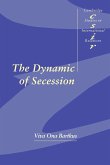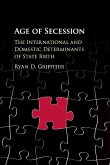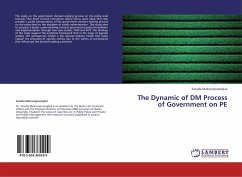Secessionist activity has been increasing in the developing world, in Western liberal democracies, and especially in the former Communist states of Eastern Europe. This timely book offers a general explanation for the occurrence of the phenomenon, arising from a comparative study of numerous historical examples of secession and separatist conflict. The book develops a comprehensive framework, specifying the elements necessary for a secession crisis, and discussing the moral issues underpinning such a decision. The author examines the political, economic and social costs and benefits of a community's two alternatives - continued integration in the existing state and secession - which enter into decision-making processes, and argues that secessionist activity arises only when government action or international developments change a community's view of the balance among these costs and benefits. Her conclusion is that a community's aspirations for independence change constantly with circumstances, and that in some instances, sensitive government policy can substantially mitigate secessionist sentiment, while, in others, evolution in the prevailing international climate can outweigh domestic factors in the dynamic of secession.
Table of contents:
Part I: 1. Introduction; 2. Theoretical foundation for analysis of secession; Part II. The Costs and Benefits: 3. The benefits of membership; 4. The costs of secession; 5. The costs of membership; 6. The benefits of secession; Part III. The Dynamic of Secession: 7. 'Last resorts': a rise in the costs of membership; 8. 'Opportune moments': a reduction in the costs of secession; 9. A reduction in the benefits of membership; 10. A rise in the benefits of secession; 11. Conclusion.
Secessionist activity has been increasing in the developing world, in Western liberal democracies, and especially in the former Communist states of Eastern Europe. This timely book offers a general explanation for the occurrence of the phenomenon, arising from a comparative study of numerous historical examples of secession and separatist conflict.
Offers an explanation for the occurrence of secessionist conflict, based on a comparative study of numerous historical examples.
Table of contents:
Part I: 1. Introduction; 2. Theoretical foundation for analysis of secession; Part II. The Costs and Benefits: 3. The benefits of membership; 4. The costs of secession; 5. The costs of membership; 6. The benefits of secession; Part III. The Dynamic of Secession: 7. 'Last resorts': a rise in the costs of membership; 8. 'Opportune moments': a reduction in the costs of secession; 9. A reduction in the benefits of membership; 10. A rise in the benefits of secession; 11. Conclusion.
Secessionist activity has been increasing in the developing world, in Western liberal democracies, and especially in the former Communist states of Eastern Europe. This timely book offers a general explanation for the occurrence of the phenomenon, arising from a comparative study of numerous historical examples of secession and separatist conflict.
Offers an explanation for the occurrence of secessionist conflict, based on a comparative study of numerous historical examples.








